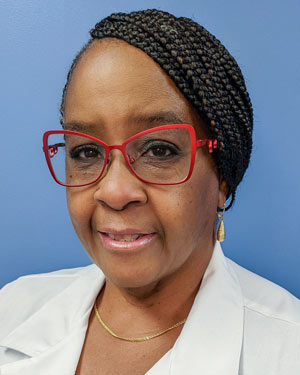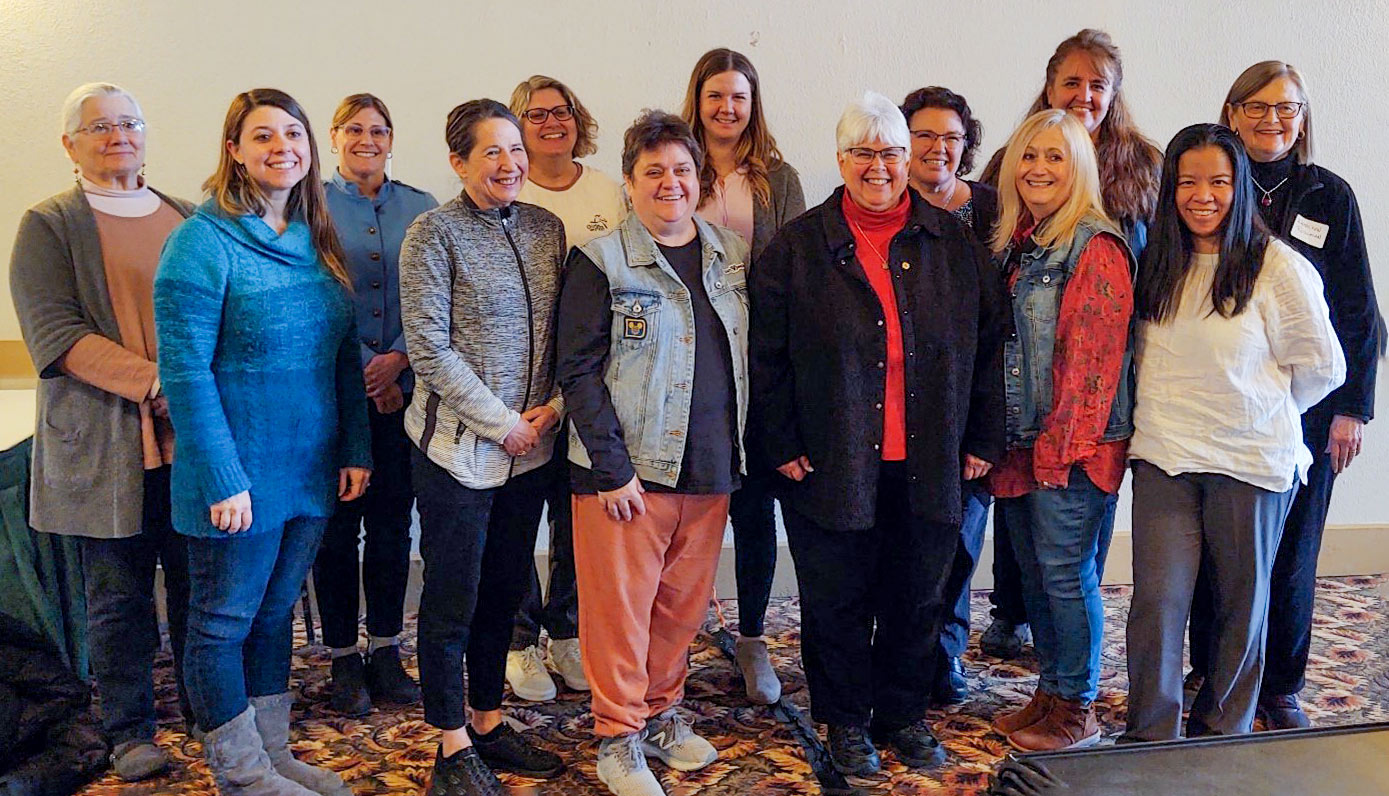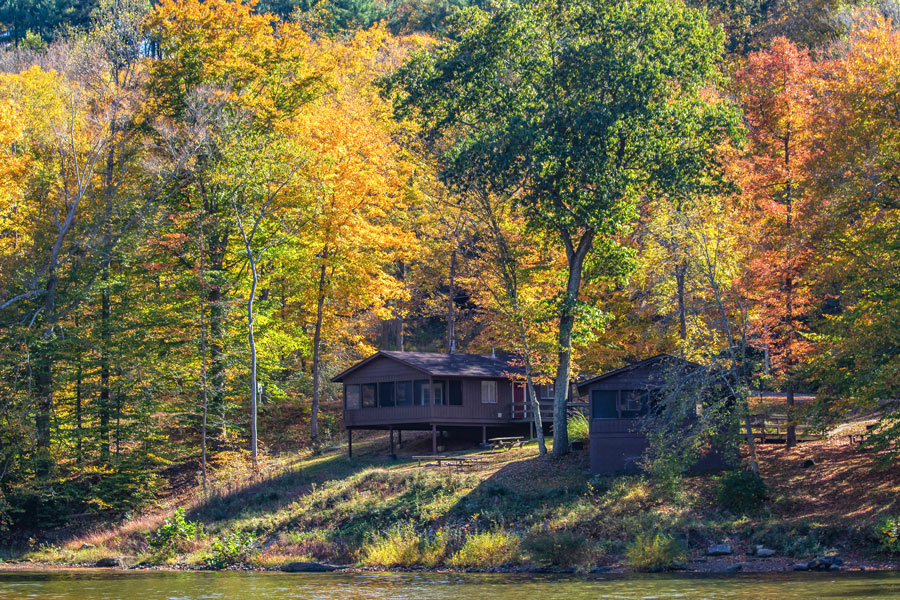Ignite | Fall 2022
Rediscovering Capacity and Purpose
BY JEANNE M. HOBAN
 Darcia Simpson, Ph.D., M.Div., describes herself as “a caregiver at heart.”
Darcia Simpson, Ph.D., M.Div., describes herself as “a caregiver at heart.”
As a spiritual care coordinator for Hospice of the Western Reserve in Cleveland, Ohio, Dr. Simpson spends her days helping others address the grief, emotional distress and existential pain that frequently accompany the end-of-life journey.
She spends her evenings and weekends caring for her 98-year-old mother.
Somewhere in between, she finds time to work as an ordained minister and teach human values courses as an assistant professor in the College of Medicine at Northeast Ohio Medical University.
“So just life and career and all of those stressors going on,” she said.
When everyone in her home ended up with COVID-19 — including hospital stays for Dr. Simpson and her mother — she finally realized she might need a break.
A NATIONAL ISSUE
In 2019, the National Academy of Medicine reported that between 35 and 54 percent of U.S. nurses and physicians “have substantial symptoms of burnout.”
And that was before the pandemic hit.

Participants in a Healer's Art retreat. Back row, from left, are Joanie Webster, MD; Sabrina Ben-Zion, MD, FAAP; Sladjana Courson, DO; Ellen Harrington, PhD; Tracey Schaub, DO; Michele Gareri, BSN, RN; Kathleen Rossman. Front row, from left: Laura Miller, MD, MPH; Maria Ramundo, MD; Renee Markovich, MD; Evangeline Andarsio, MD; Margy Sanders, MA, LSW; Sibley Strader, MD.
“Some of the usual buffers against burnout, such as family and social support, have been upended during the COVID pandemic,” Margy Sanders, M.A., LSW, project director, Geriatric Workforce Enhancement Program, and associate professor of family and community medicine at NEOMED, noted. “There is a well-established link between burnout and negative outcomes for providers across the spectrum including suicide, mental health issues and substance abuse. Ultimately, burnout leads to poor patient outcomes, decreased patient safety, lower productivity and increased medical errors. COVID- associated burnout has resulted in significant increases in staff turnover and provider shortages.”
She added, “This is especially concerning in rural settings due to the pre-existing shortages, resulting in decreased access to care for those patients.”
The problem became so large that in 2022 the U.S. Surgeon General Vivek H. Murthy, M.D., released an advisory, Addressing Health Worker Burnout, with recommendations for addressing the public health crisis of burnout among the U.S. health workforce. One of the recommendations includes the Healer’s Art program, an innovative discovery model course developed in 1991 by Rachel Naomi Remen, M.D., of the Remen Institute for the Study of Health and Illness (RISHI) focusing on the affective domain.
The Healer’s Art curriculum is at the heart of a resiliency project developed by Sanders.
“She is probably one the most wise and sage people that you will ever meet. I have been a Rachel Naomi Remen groupie forever,” Sanders joked.
In early 2022, Sanders received a three-year, $2.17 million grant from the U.S. Health Resources and Services Administration under the Health and Public Safety Workforce Resiliency Training Program.
Through the grant, Sanders and Denise Kropp, project manager, organize weekend retreats for health professionals at Salt Fork Lodge in Cambridge, Ohio, where participants spend the weekend exploring what Sanders calls “the two main drivers of burnout: loss of meaning and isolation,” and find renewed satisfaction in their daily work.

Dr. Darcia Simpson was one of the health professionals to take advantage the retreat.
“I was filled up to the point I didn't have any capacity left,” she said. The retreat “is all about rediscovering meaning and purpose. And it just validated my years of practice.
“I feel like I have space in me to do again,” she added. “And I'm not talking just, you know, rest from a weekend, which is good, too. I'm talking about capacity. Just, oh my goodness, I didn't know I was that full!”
Sanders and her team recognized that the Healer’s Art would be a conduit to improving resiliency and, hopefully, impacting burnout for interprofessional health care providers, students and first responders.
“We chose to hold the retreat trainings at a state park to capture the ambiance of an idyllic setting,” Sanders said.
The retreats are facilitated by Evangeline Andarsio, M.D., director of the Remen Institute for the Study of Health and Illness (RISHI) at Pure Healthcare in Dayton, Ohio.
Dr. Andarsio leads the retreat participants through a modified and abbreviated version of the Healer’s Art program. The program opens with the discovery model and generous listening. The second day focuses on resiliency and meaning of service work, sharing grief and honoring loss, wrapping up with mystery and awe.
For Dr. Simpson, the retreat helped her rediscover meaning and purpose in her career as a spiritual care coordinator working with people at the end of life.
“It allowed me — and this may seem weird — but it allowed me to realize that, you know, I am comfortable with suffering and grief. I'm equipped for that. So I don’t try to run away from it. I don't necessarily run towards it. Well, you know what I'm gonna say? I do. Because the firefighter rushes toward the fire and we don't question it. I run toward the suffering and the grief and I don't run away from it. So I don't want to apologize for that anymore.”
The final day of the retreat is spent creating a collective calling commitment statement and reviewing the self-care tools presented throughout the program.
Eight retreats were held throughout 2022 for resident faculty, interprofessional faculty, first responders, health professionals, paraprofessionals and caregivers. More than 200 individuals have taken part in the retreats. The impact though could go far beyond that number.
“Our hope is that trainees will take this back to others,” Sanders said. “And it’s extremely important how many patients will be impacted.”
In addition to the programs at Salt Fork, the team offered a four-hour session with first-year medicine students at NEOMED. Another session was held at Camp Christopher for first-year residents at Akron Children’s Hospital.
The team is working with Salt Fork State Park to schedule retreat workshops for 2023.
And to help sustain the program beyond the grant period train-the-trainer Healer’s Art sessions are being held.
While the pre- and post-post tests and evaluations will reveal quantitative measures of the program’s effectiveness, for Sanders the value of the program is measured in a less tangible way.
“I think success for me personally would be if the programs are beings used and trickle down to the next generation, so they too can use them as prevention and as a balm to treat whatever they are dealing with,” she said.
